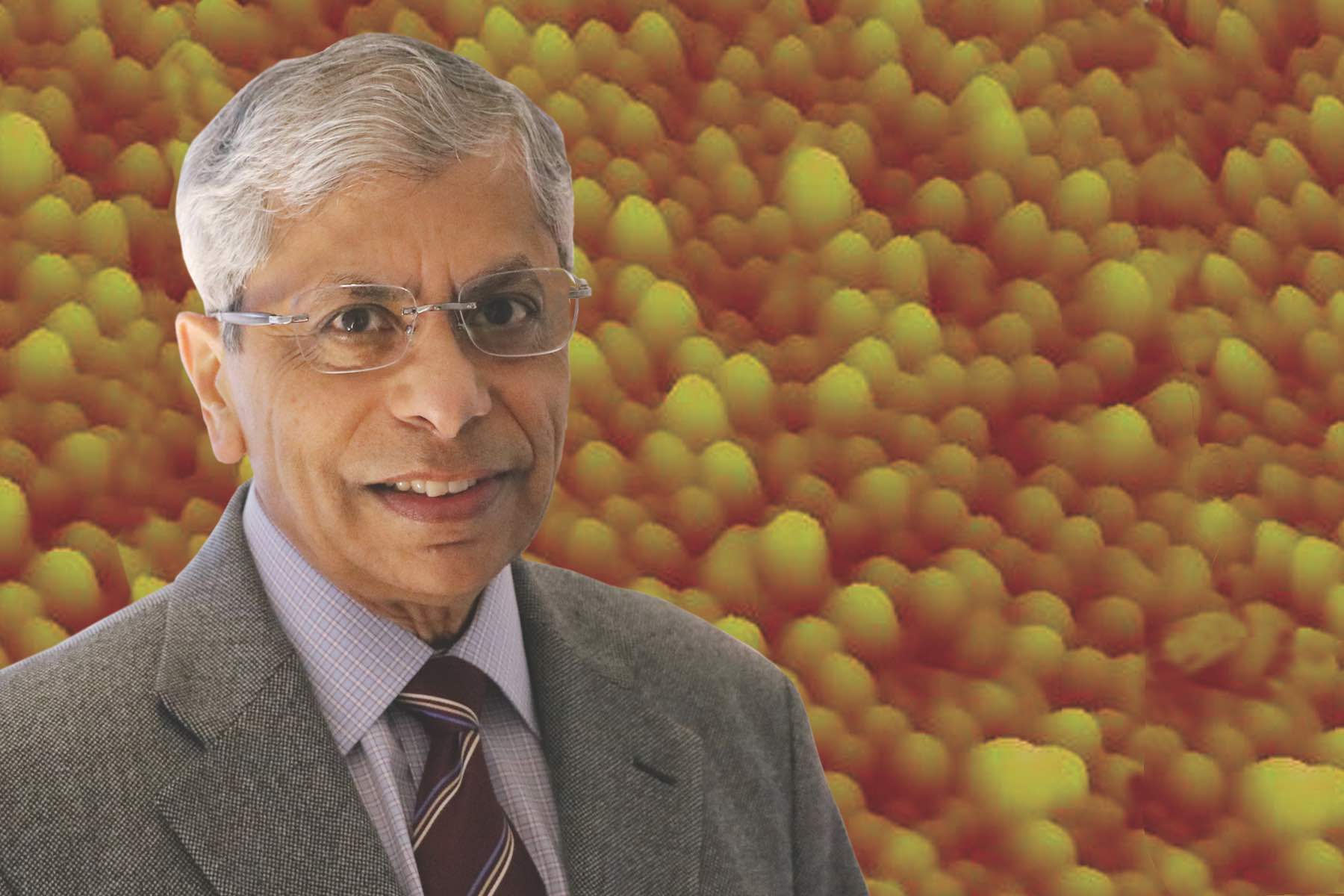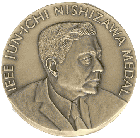Pallab Bhattacharya to receive 2019 IEEE Jun-ichi Nishizawa Medal
Bhattacharya honored for the development and commercialization of quantum dot lasers.

 Enlarge
Enlarge
Pallab Bhattacharya, Charles M. Vest Distinguished University Professor and James R. Mellor Professor of Engineering, is the co-recipient of the 2019 IEEE Jun-ichi Nishizawa Medal, which he will share with Professors Yasuhiko Arakawa from the University of Tokyo and Dieter Bimberg from the Technical University, Berlin “For contributions to the development and commercialization of quantum dot lasers.”
The Jun-ichi Nishizawa Medal is given for outstanding contributions to material and device science and technology, including practical application.
Prof. Bhattacharya has been a leader in the development of quantum dot lasers for almost three decades. Since the early 1980’s, it was evident in the semiconductor optoelectronics community that quantum dot lasers would be significantly superior in performance compared to existing semiconductor lasers, but there were significant challenges to monolithically forming these nanostructures in a semiconductor matrix. While several groups around the world were active in this pursuit, Professor Bhattacharya and his group identified the self-organized formation of quantum dots rather accidently while studying the behavior of high-speed transistors in the lab.
Throughout the following decades, Bhattacharya and his group continued to achieve key technical breakthroughs that eventually led to the commercialization of quantum dot devices.
Bhattacharya and his group reported one of the first room temperature quantum dot lasers, emitting at ~1µm, and they subsequently demonstrated lasers with emission at 1.3 and 1.55µm; they were also the first to demonstrate high-speed modulation of these devices.

 Enlarge
Enlarge
These quantum dot lasers were superior in performance compared to existing bulk semiconductor and quantum well lasers, as expected. Most significant about these near infrared quantum dot lasers was their temperature invariant operation at high temperatures, low threshold and low chirp, features that were demonstrated almost concurrently, yet independently, by the three co-recipients of the 2019 Nishizawa medal: Arakawa, Bhattacharya and Bimberg.
More recently, Bhattacharya turned his attention to self-organized quantum dots of III-nitride semiconductors, which emit visible light. The solid-state lighting industry has perfected blue LEDs and lasers and are in the process of doing so with green emitting light sources. However, as of 2010, they had not been able to get to red emitters, necessary to eventually get to true RGB white lighting and full-color displays.
Bhattacharya believed he could get to red emitters with quantum dots because of the lower polarization fields in them than in quantum wells. Within a brief period of time, he and his group demonstrated the first green- and red-emitting quantum dot lasers with nitride materials in 2011 and 2013, respectively.
The devices were perfected in a collaboration with an industry sponsor. They demonstrated RGB lasers and LEDs and, together with the multinational lighting company OSRAM, demonstrated true all-semiconductor quantum dot converter warm and cool-white LEDs.
Near infrared quantum dot lasers have made a sizeable impact on the communication industry, in the important area of silicon photonics, and on medical applications. Near-infrared quantum dot lasers are now being developed and commercialized in several countries.
The visible quantum dot lasers and LEDs are important for lighting, displays, optical data storage and plastic fiber communication. Quantum dots made by different techniques, such as colloidal quantum dots, are being commercially developed for high definition displays and “quantum dot television.”
Bhattacharya’s early research on the identification, epitaxy and characterization of self-organized quantum dots, as well as the research and development of the first quantum dot lasers, was supported by the US Army Research Office under the first University Research Initiative (URI) Program, led by Professor George Haddad, and the National Science Foundation. Subsequent work was supported by ONR, AFOSR, DARPA, DOE and multiple industry groups. In addition, several of Bhattacharya’s colleagues at Michigan contributed to the understanding of the properties of self-organized quantum dots and their devices.
Professor Bhattacharya has conducted research on compound semiconductor epitaxy and materials characterization, photonic and spintronic devices and integrated optoelectronics for several decades. Currently he and his group are investigating and developing quantum dot and dot-in-nanowire devices on silicon that include single photon sources and near infrared and infrared detectors.
Professor Bhattacharya is a member of the National Academy of Engineering and a Fellow of the National Academy of Inventors. He is also a Fellow of IEEE, the American Physical Society (APS), the Optical Society of America (OSA) and the Institute of Physics (UK).
He received the John Simon Guggenheim Fellowship, served as a Distinguished Lecturer for IEEE/LEOS, and has been honored with an honorary D. Eng. degree from the University of Sheffield, UK “to recognize a distinguished career in compound semiconductors.”
Professor Bhattacharya has received many international awards for his pioneering contributions to the research and development of quantum dot lasers and other light sources and optoelectronic integrated circuits. These include the Heinrich Welker Medal, the IEEE David Sarnoff Award, the IEEE Nanotechnology Pioneer Award, the TMS John Bardeen Award, the OSA Nick Holonyak Award, the IEEE/EDS Paul Rappaport Award and the IEEE/LEOS Engineering Achievement Award.
Most recently, he received the Molecular Beam Epitaxy Innovator Award from the North-American MBE Advisory Committee and Conference “for fundamental contributions to molecular beam epitaxy of quantum confined and nanoscale heterostructures and optoelectronic devices realized with them.”
About the IEEE Jun-ichi Nishizawa Medal

 Enlarge
Enlarge
IEEE Medals are the highest awards presented on behalf of the IEEE Board of Directors.
The IEEE Jun-ichi Nishizawa Medal was established in 2002 in honor of Jun-ichi Nishizawa’s lifetime of outstanding achievements ranging from fundamental semiconductor materials and devices through optical communication and power systems. Considered the “Father of Japanese Microelectronics,” IEEE Spectrum recognized Nishizawa as one of the geniuses of the 20th century.
Nishizawa was a professor, director of two research institutes and the 17th president of Tohoku University, Japan. He has received 28 national and international awards.
The Jun-ichi Nichizawa Medal is sponsored by The Federation of Electric Power Companies in Japan.
 MENU
MENU